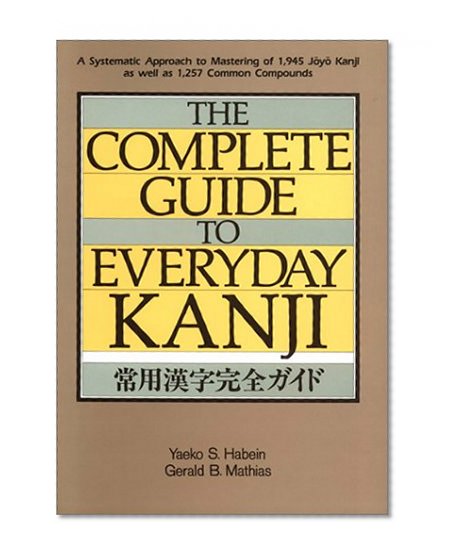The Complete Guide to Everyday Kanji / Yaeko Habein, Gerald B. Mathias
| List Price: | |
| Our Price: | |
|
Used Book Price: $19.71 | |
| The Complete Guide to Everyday Kanji / Yaeko Habein, Gerald B. Mathias | |
| Publisher: Kodansha Amer Inc | |
| Availability: | |
| Sales Rank: 2361753 | |
|
The goal of this book is to make the kanji learner's task a little easier by clarifying two fundamental relationships: the form-meaning relationship of a kanji, and form-on-yomi relationships of kanji. Toward this end, special care has been taken with regard to the order of presentation. After a brief chapter on the stroke order of kanji, the complete set of 1,945 Joyo Kanji, the "common use" characters listed by the Japanese Ministry of Education in 1981, will be introduced in three categories, one chapter for each, in the following sequence.
1. Basic-form kanji. These are 152 independent kanji that, having originated in unitary pictures or signs, cannot be analyzed into components. If one becomes familiar with these first, complex kanji that include them will be easier to learn later.
2. Semantic compound kanji. These are kanji made up of some combination of two or more basic forms or components that would have been basic forms had they not lost their status as independent kanji (at least as far as the J~y~ Kanji are concerned). The 483 kanji in this chapter are made of components that together suggest the meaning of the kanji (although a few of them also have characteristics of the third, phonetic, category). The emphasis of this chapter is thus on the association of meanings with forms.
3. Phonetic compound kanji. These are kanji that can be analyzed into a meaning-representing (or semantic) component and a sound-representing (or phonetic) component. Although most of the phonetic components have, or at least had, their own semantic significance as well, this chapter emphasizes the relationship between the phonetic components and the on-yomi of the 1,310 kanji listed.
Within the chapters on semantic and phonetic compound kanji, the characters are presented in an order that builds upon kanji and components previously introduced.
Whenever possible, we list the surmised earliest meanings of the kanji. Among the later variations on the meanings, we concentrate on those that are relevant to modern Japanese. Occasionally it is noted that a meaning applies only to Japanese, particularly when a peculiar usage in Japanese seems unrelated to the Chinese history of the kanji.
Now you can buy Books online in USA,UK, India and more than 100 countries.
*Terms and Conditions apply
Disclaimer: All product data on this page belongs to  .
.
No
guarantees are made as to accuracy of prices and information.










